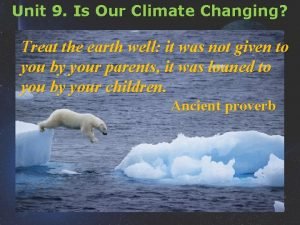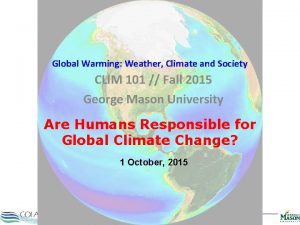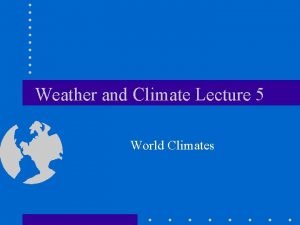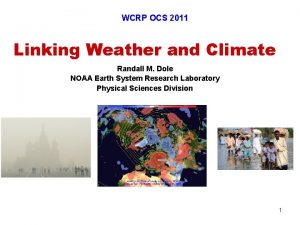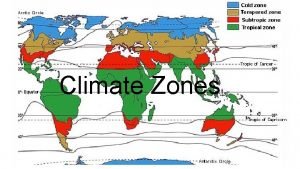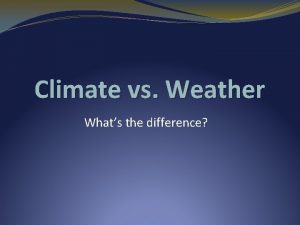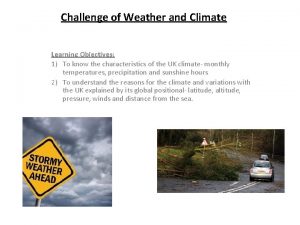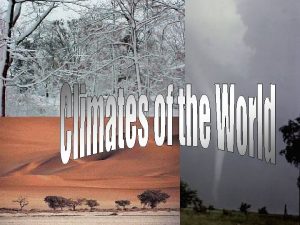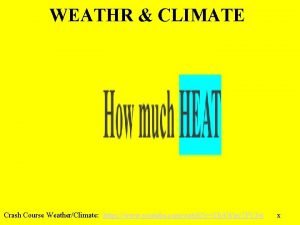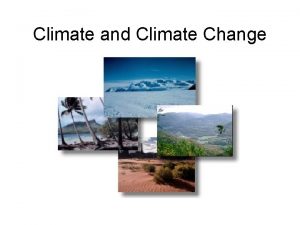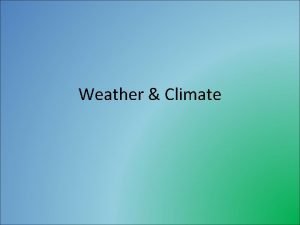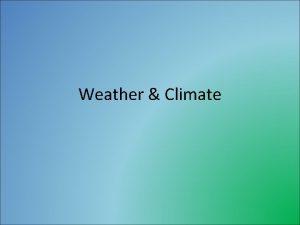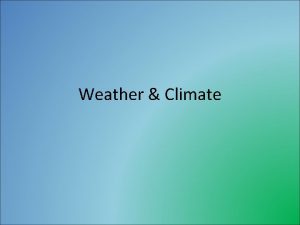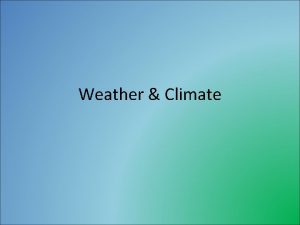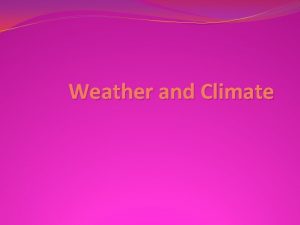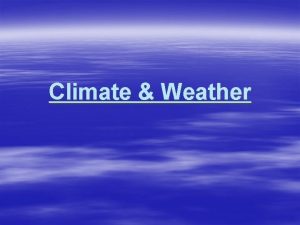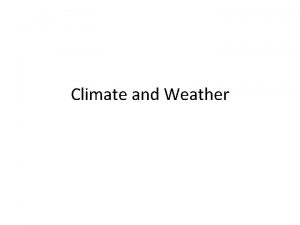Grade 10 Science Unit 3 Climate Change Weather














- Slides: 14

Grade 10 Science Unit 3: Climate Change Weather and Climate Classifying Canadian Climates

Weather refers to the atmospheric conditions for a specific place at a specific time. How does Oakville’s weather affect you life? Climate refers to the average weather conditions that occur in a region over a long period of time (at least 30 years). How does Oakville’s climate affect you life? Weather and Climate

August is the wettest month of the C year in Toronto. 2. Monday’s low temperature was 4 o. C in Oakville. W 3. Hurricane Katrina struck New Orleans on August 29, 2005. W 4. Victoria, B. C. has the warmest winters C in Canada. 1. Weather or Climate?

�Watch a current weather forecast here What makes up the weather?

�Temperature: A measure of how fast the particles in matter are moving. Units: Celsius (o. C) �Precipitation: Condensed water that falls to the ground. (e. g. , snow, rain, sleet, drizzle, etc. ) Units: millimetres (mm) �Clouds: Condensed water/ice too small to fall to the ground. Key Weather and Climate Terms

�Humidity: The relative amount of water vapour in the air. Units: % �Wind: Movement of air over the Earth’s surface. Units: km/h �Jet Stream: Narrow, fast air currents found high in the atmosphere.

�Front: A boundary between air masses with different characteristics (cold fronts, warm fronts, occluded and stationary fronts).

�Atmospheric Pressure: A measure of the force per unit of area produced by the particles of gas in the atmosphere. Units: kilopascal (k. Pa) Low Pressure: cloudy, rainy weather. High Pressure: clear, sunny weather. �Meteorology is the science of studying and predicting the weather.

Biomes are large geographical area with similar climate (temperatures and precipitation ranges). Biomes contain specific types of plants and animals that adapted to these conditions. Biomes

Biomes of the World

�Canada contains all of the major biomes on Earth except tropical rainforests. Biomes of North America

� Combine a line and bar graphs. � Line (red) represents average monthly temperature. � Bars (usually blue) represent average monthly precipitation. Climatographs

Task: 1. Examine the climatographs of Canada’s biomes. 2. Write the name of the biome and climatograph location on your chart. 3. From the graph, determine the range of average monthly temperatures and precipitation amounts. Record these values. 4. Describe the characteristic plants of the biome. Investigating Canada’s Climate

Analysis Questions: 1. What biome do we live in? 2. Would you rather live in a different Canadian biome? Why or why not? 3. What is the wettest biome? Hint: the graph axes can be misleading! 4. What is the warmest biome? 5. What biome has the most extreme seasonal variations? 6. Do you think climate change would affect the map of Canada’s biomes?
 Climate change 2014 mitigation of climate change
Climate change 2014 mitigation of climate change Unit 9 climate change
Unit 9 climate change Grade 7 term 3 natural science
Grade 7 term 3 natural science World geography chapter 3 weather and climate
World geography chapter 3 weather and climate Weather climate and society
Weather climate and society How do prevailing winds affect climate
How do prevailing winds affect climate Cimates
Cimates Conclusion of weather and climate
Conclusion of weather and climate Climate zones and weather worksheet answer key
Climate zones and weather worksheet answer key Whats the difference between weather and climate
Whats the difference between weather and climate Objectives of weather and climate
Objectives of weather and climate Climate vs weather
Climate vs weather Weathr today
Weathr today Youtube.com
Youtube.com Brainpop precipitation
Brainpop precipitation

